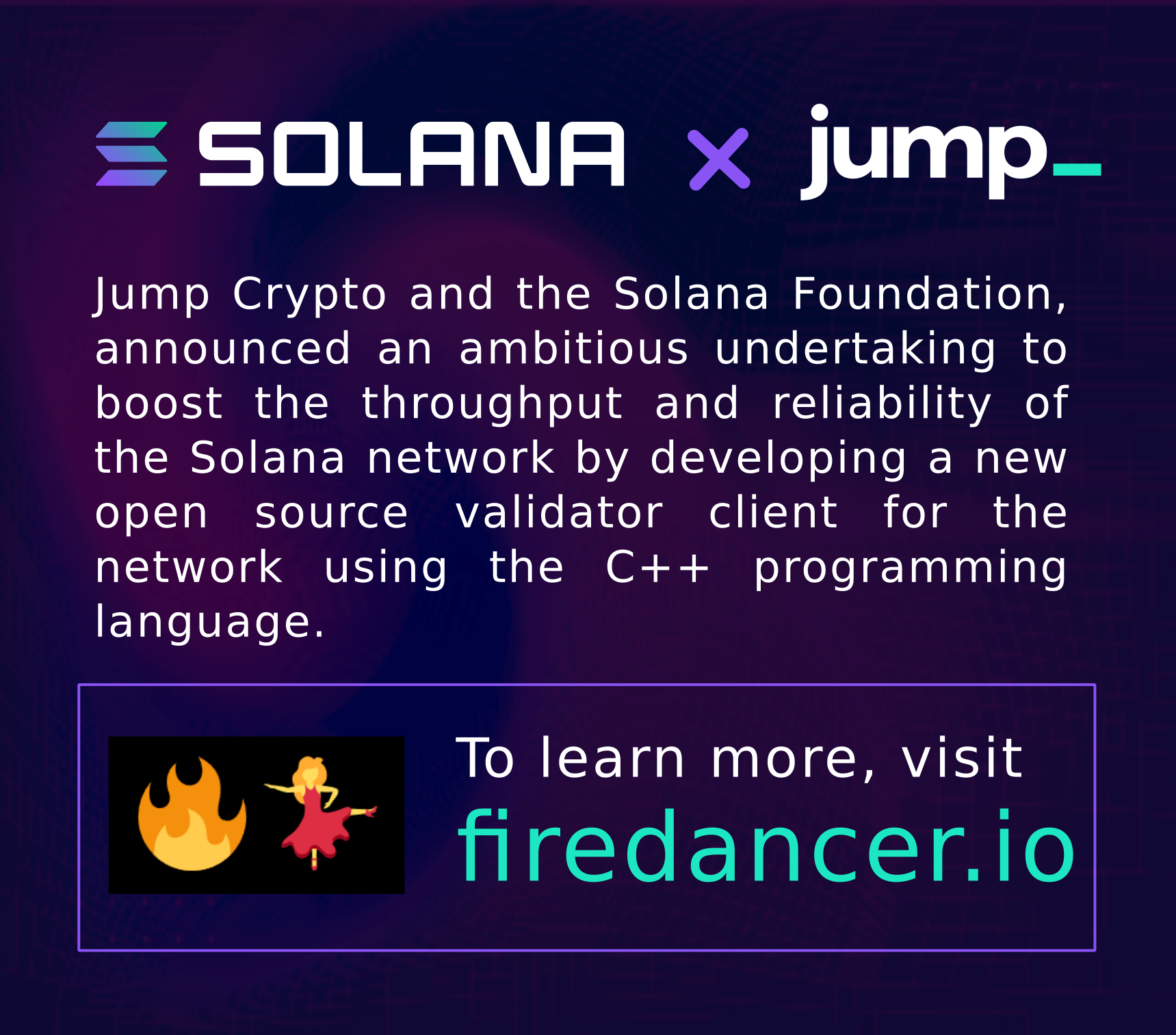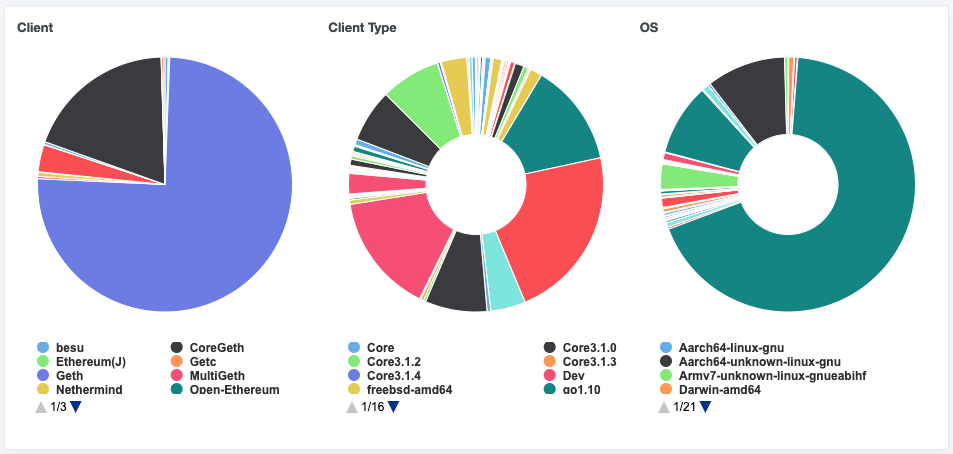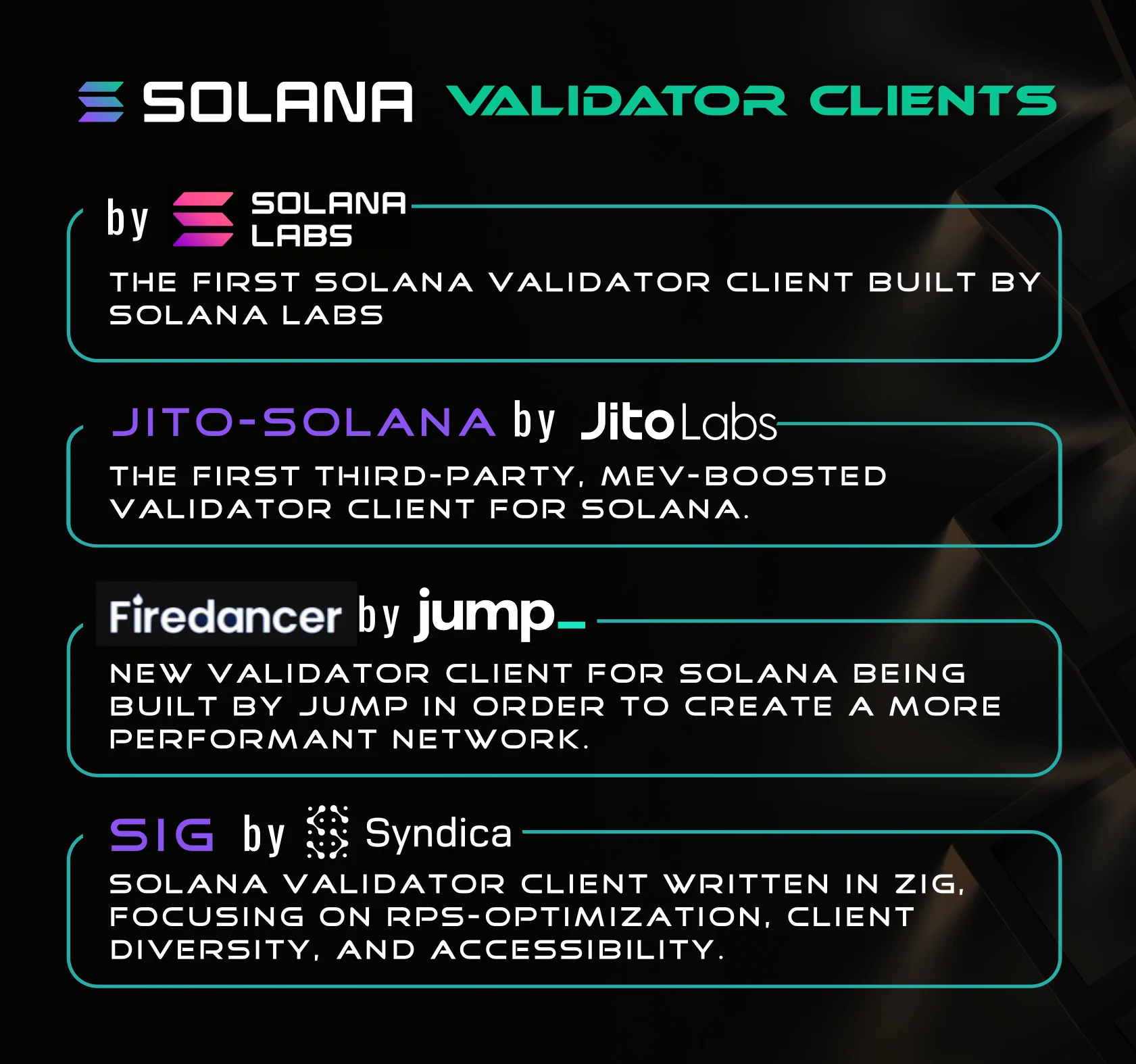What is Firedancer? Firedancer is a solution for a new generation Validator on Solana to solve all current network problems. Can Firedancer really do what it says and what it really is? Let’s find out in the article below:
To understand more about Solana, people can refer to some of the articles below:
- What is Solana (SOL)? Solana Cryptocurrency Overview
- Potential Next Generation Projects on Solana Ecosystem
- THE HAK SHOW #2 | Solana And Her Quest To Regain Glory
- 3 Reasons We Continue to Put Our Trust in the Solana Ecosystem
Current Challenges of the Solana Network
There are two big challenges facing the current Solana network: the level of decentralization and stability of the Solana network. First, about the degree of decentralization of the Solana network. Solana itself is a Monolithic Blockchain with a TPS of up to several thousand (actually), if you look at today’s Blockchains such as Ethereum, Sui, Aptos, Avalanche,… even Layers 2, Solana is far ahead. Therefore, to become a Validator on the Solana network, there are many hardware requirements, problems arise here:
- The hardware to deploy Validator on Solana is too expensive.
- Some hardware is not available on the market and must be ordered in advance.
Because of this factor, very few people will have enough resources to become a Validator on the Solana network and this affects decentralization in the future. What Solana hopes for is time. Over time, hardware will become cheaper and more popular, so implementing Validator will become easier over time. However, they cannot rely on solutions where they do not have the initiative.
Besides the Solana factor, the fact that the Solana network is shut down has become too familiar to users. This problem has an extremely strong impact on the security and decentralization of the network.
Firedancer Overview
What is Firedancer?
Firedancer is a solution built and developed by Jump Crypto designed to improve the performance of the Solana network. To be exact, Firedancer is the new Validator Client Software on Solana built on C and C++ programming languages. Firedancer is designed to operate fast and save memory, making it suitable for building a high-performance Client.

The birth of Firedancer on Solana and bringing a number of Client improvements are as follows:
- Firedancer is designed to execute concurrent transactions more efficiently, faster, and with less congestion. Remember that Solana was one of the first Layer 1s to apply Parrallel Execution.
- Firedancer supports Sharding. Sharding will have important roles as Solana expands horizontally.
- Firedancer Client includes P2P Communication Protocols and Optimized Networking optimized to enhance the performance and speed of block and transaction transmission in the Blockchain system.
- Firedancer Client uses a modified version of the old Solana consensus mechanism that allows validators to participate in the consensus process and receive rewards for their contributions to the network.
From the above change, the network has many additional advantages such as improved performance and scalability, increased reliability for Clients, thereby limiting downtime and making the network more stable. .
During an online demo livestream in 2022, Firedancer demonstrated that it can handle more than 1 million transactions per second. This number is a truly impressive number!
However, besides the advantages, Firedancer also has some disadvantages such as this is still a new technology, with many potential risks when put into practical implementation.
Looking back at lessons from Ethereum

To promote decentralization for networks like Ethereum, the solution they offer is to encourage developers outside the Ethereum Foundation to build and deploy their own clients in many different programming languages. , this helps Node Operators have a lot of diversity in using Clients.
Looking at the number of Client types today includes:
- Nethermind: Accounts for 38.92% of the network.
- geth: Accounts for 37.38% of the network.
- erigon: Accounts for 12.10% of the network.
- besu: Accounts for 10.33% of the network.
- reth: Accounts for 0.87% of the network.
- coregeth: Accounts for 0.33% of the network.
- openethereum: Accounts for 0.06% of the network.
Having many Clients helps the network have many more advantages such as:
- Because each Client is built on a different programming language, if a certain set of Clients fails, it will not affect the network too much as Validators will choose different Clients.
- Limit the risk of transaction finality to avoid the case of any individual manipulating transactions on the Blockchain.
- Developers can arbitrarily build different Clients. The more Clients, the more diverse and decentralized the network.
Number of Clients on the Solana network

Currently, the Solana network has deployed a total of 3 Validator Clients including:
- Solana Labs Client: Solana Labs client is a validation server software (Validator Client) developed by Solana Labs for Solana. This is one of the main servers for Solana, written in the Rust programming language. This server is responsible for managing the nodes participating in the process of staking cryptocurrency and proposing new blocks in the Solana network.
- Jito Client: Jito-Solana Client is a validation server software (Validator Client) for Solana. Known as the main server software for Solana, Jito-Solana Client was created by forking from the open source Solana Labs client and is also written in the Rust programming language.
- Sig Client: Sig Client is a next generation Validator Client written in the Zig programming language – an advanced and Low-level Programming Language designed to combines the functionality of low-level programming languages with the simplicity and efficiency of high-level languages.
Summary
Firedancer continues to be a revolution for the Solana network and can help Solana regain its position in the next phase of the Layer 1 battle.
Hopefully through this article everyone can understand more about what Firedancer is?


